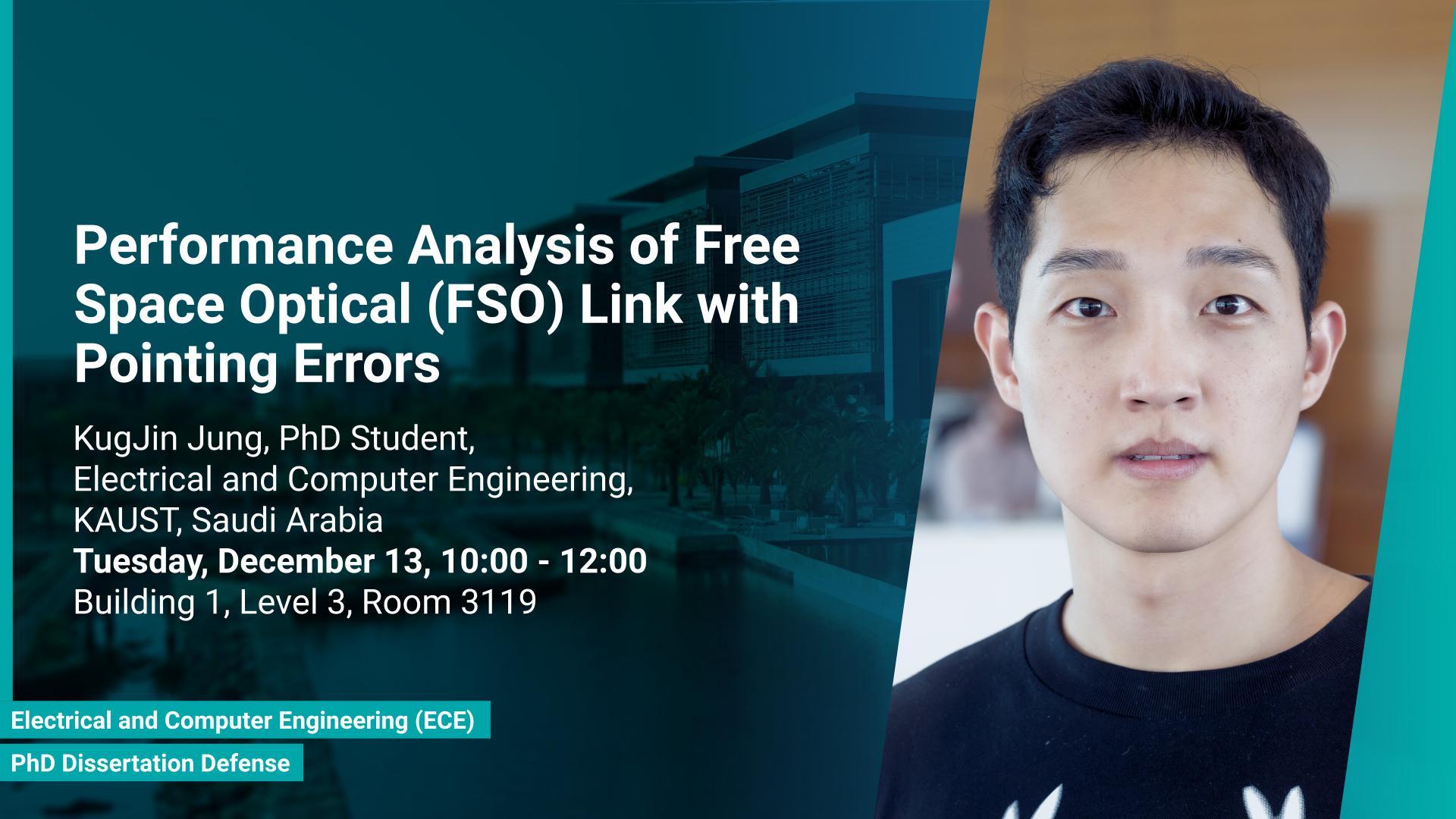Event Start
Event End
Location
Abstract
Free-space optical communication (FSO) has been proposed as an attractive alternative to radio frequency communication in the sense that it provides wide bandwidth and high capacity without the requirement of a license. However, the scalability of the FSO link is limited by pointing errors, atmospheric turbulence, and loss. Especially, when it comes to the FSO link between moving platforms, it is imperative works to analyze the statistical channel model considering accurate pointing errors and atmospheric turbulence at the same time. In this paper, we analyze the performance of FSO links over various atmospheric situations with pointing errors.
First, we assume strong turbulence and obtain a unified approximation of the composite probability density function (PDF) of channel gain, which embraces generalized pointing error models. This approximation leads to new unified formulas for the bit error rate (BER) and outage capacity of an FSO link, which account for the two possible detection mechanisms of intensity modulation/direct detection (IM/DD) and heterodyne detection.
Secondly, we statistically derive the unified composite PDF containing all possible pointing error models based on the weak turbulence model. In addition, we analyze BER performance in FSO communication with IM/DD and heterodyne detection technology based on the derived unified composite PDF results.
Finally, we investigate the ergodic capacity of the unmanned aerial vehicle (UAV)-based FSO links over the random foggy channel. More specifically, we derive composite PDF and close approximation for the moments of the composite PDF using the statistical model of a UAV-based 3D pointing error and a random foggy channel. With it, we obtain upper bound and asymptotic approximation of the ergodic capacity for the two possible detection techniques of IM/DD and heterodyne detection at high and low signal-to-noise ratio (SNR) regimes.
Brief Biography
KugJin Jung received B.S. and M. S. degrees in electrical engineering from Korea University, Seoul, South Korea, in 2016 and 2018, respectively, where he is currently pursuing a Ph.D. degree with the School of Electrical Engineering. In 2019, he started a dual degree program at King Abdullah University of Science and Technology (KAUST), Thuwal, Saudi Arabia, and Korea University, to conduct collaborative research. His current research interest includes free space optics, performance analysis of wireless communication systems, and centralized radio access networks.


